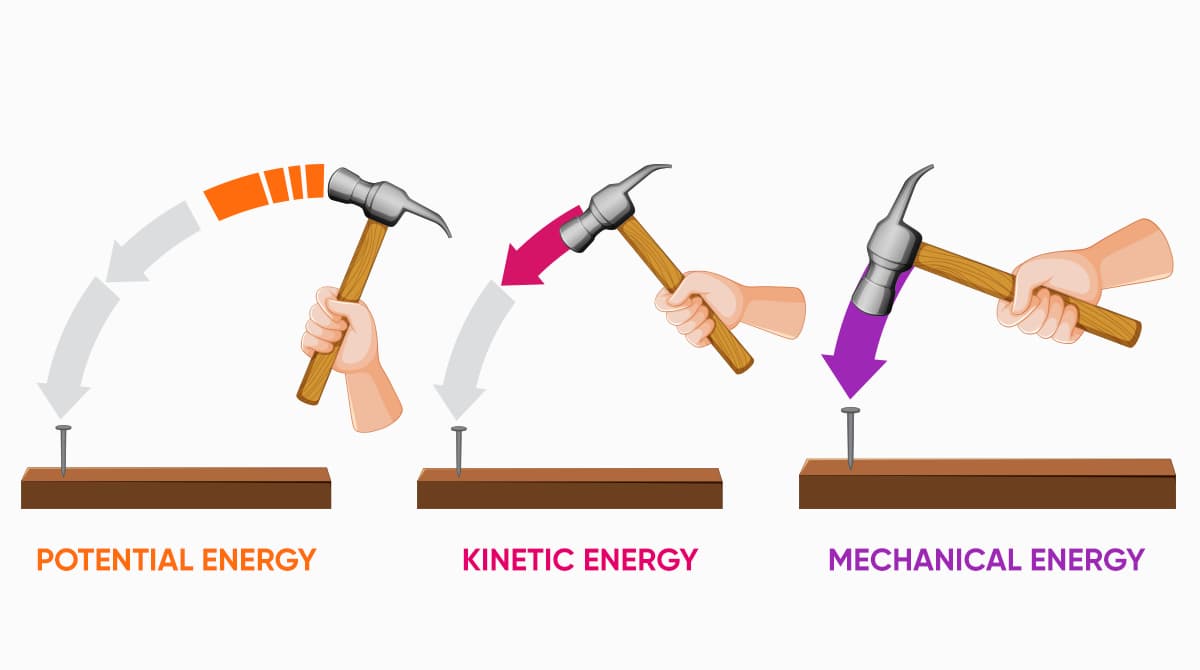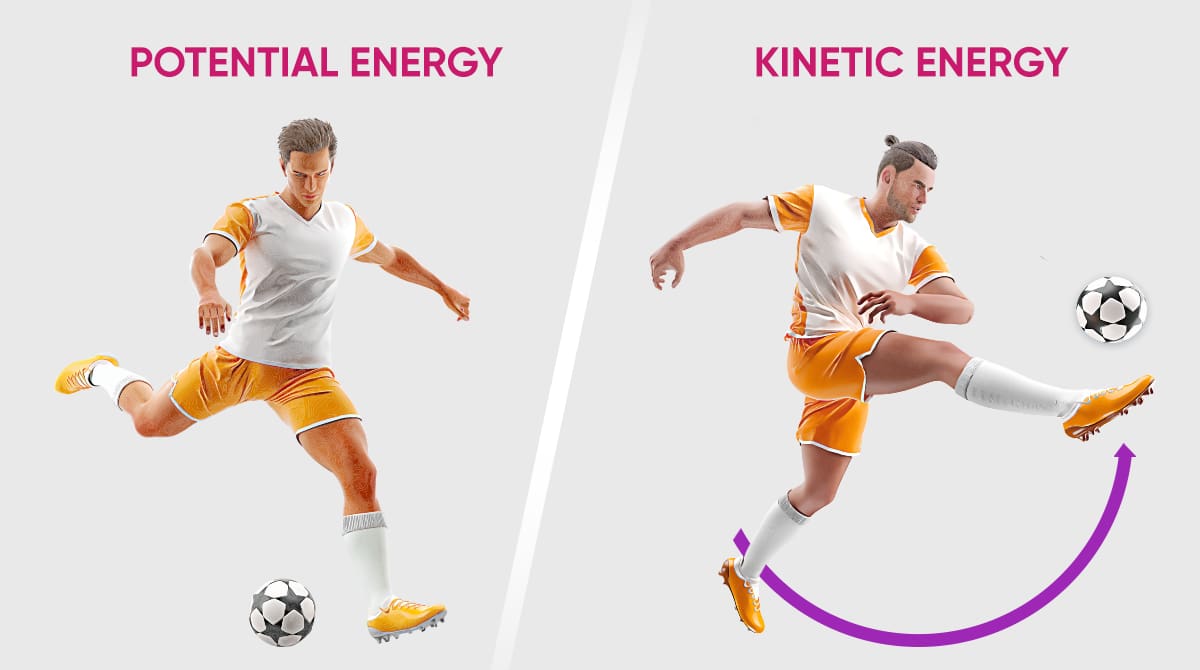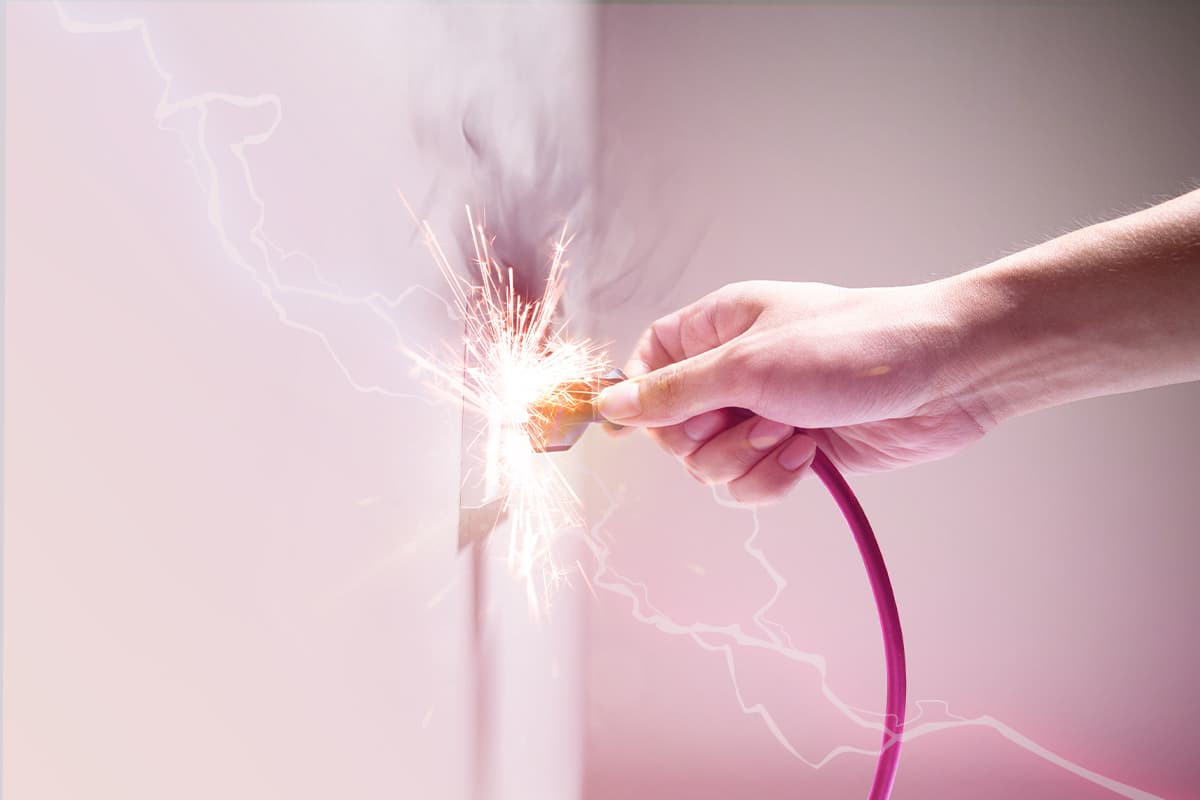
What Is Kinetic Energy? What Are Different Types of It?
What is in this article?
Kinetic energy is a concept that we come across in all facets of daily life, despite the fact that it sounds like a physics issue.
Kinetic energy, which may be defined as the energy an item has owing to motion, is essentially present in all aspects of daily life.
What exactly is kinetic energy, and what different kinds of kinetic energy exist? You can find all the details about kinetic energy later in the article.
What Is Kinetic Energy?
When it comes to the history of electricity, kinetic energy occupies a very important place. To comprehend kinetic energy, one must first become familiar with different types of energy. There are three basic types of energy that we encounter in all facets of daily life: kinetic, mechanical, and potential.
Potential energy is the energy that an object or person has stored in them as a result of their position. The energy that an object or person gains as a result of motion is referred to as kinetic energy. Kinetic energy is stored in any object that moves, whether it is horizontal or vertical. In other words, kinetic energy is the energy stored in an object regardless of its direction of motion.
Mechanical energy is the sum of potential and kinetic energy. An object or person can store both energies simultaneously. For instance, kinetic and potential energy are both released when you drive a nail with a hammer. Only potential energy is kept in the hammer if you keep it stable in your grasp. However, kinetic energy is retained as you move the object when you lift the hammer backward to tighten the screw.
Energy cannot be created out of nothing and cannot be destroyed; it can only be changed, according to the rule of conservation of energy. For instance, as a pendulum swings back and forth, kinetic and potential energy are exchanged. At the apex of the pendulum's motion, the potential energy of the currently motionless object increases, and at the point where it begins to move, its kinetic energy increases.
You produce kinetic energy when you drop anything from your hand to the ground. Despite having only potential energy at first, the item in the air gets momentum due to gravity, which causes its potential energy to change into kinetic energy. The resultant kinetic energy reaches its maximum value just before impact and resets as soon as the object makes contact with the ground.

Awakening to Kinetic Energy
Experts like Aristotle, Galileo, Descartes, and Leibniz have always discussed the idea of energy. But Albert Einstein achieved significant strides in the study of energy.
E= m x c² (E: Kinetic Energy - m: increasing relative mass of an object - c: speed of light) is perhaps the world's most famous physics equation. This equation describes in a simple way the transformation of mass into energy and of energy into mass.

In the 1700s, Emilie du Chatelet changed the general conception of energy with her brand-new interpretation of Newton's Pricipia Mathematica. This translation popularized Newton's work and made it accessible to more people.
Newton, held that conservation of momentum was the most important principle of mechanics, and he accepted this principle in all his works. By asserting that energy transitions are only possible through the conservation of energy, Newton laid the foundation for an idea that, although not precisely articulated, provided a solid grounding for further exploration.
Newton's cradle on the other hand proved the conservation of energy. In the cradle, five balls are arranged side by side and suspended in a row from a horizontal bar. When the top ball is set in motion, it collides with the other balls, transferring energy to them in the process. Here, Newton demonstrated the concepts of conservation of energy, friction, and momentum.
du Chatelet further developed the principle of conservation of energy by employing Newtonian mechanics: She observed that while momentum is directly proportional to velocity, kinetic energy varies quadratically with velocity.
These concepts, later developed by Lagrange and Hamilton, focused on energy.
Although various definitions of energy have been proposed and refined by scientists over time, it was in 1807 that Thomas Young defined energy in a manner that aligns with its modern usage. According to Young, the amount of mass multiplied by the square of the velocity is called energy, that is, kinetic energy.
Newton laid the foundation for rotational kinetic energy with the terms he introduced. Rotational kinetic energy is generally the kinetic energy of a body as it rotates about its center of mass. Newton summarized torque as the effect of a force on the rotation of an object. He characterized angular velocity as angular acceleration.
How Is Kinetic Energy Calculated? Formula for Kinetic Energy
To better understand what kinetic energy is, you must first know its formula. The formula is as follows:
Kinetic Energy = 1/2 x m x v 2
In this formula, m represents mass and v represents velocity. Using this formula, you can see that an object must have both mass and velocity to gain kinetic energy. Since kinetic energy is directly proportional to the square of velocity, the magnitude of velocity also becomes significantly influential.
The standard unit of kinetic energy is joules. Joule, abbreviated as J, is a standard unit for all energies in general. Kilogram square meter per square second are also among the units used to express kinetic energy. The kilogram is the unit of mass and square meter per square second is the unit of speed.
It is worth noting that kinetic energy is a scalar quantity. It is a measurement that does not rely on direction, like length, mass, time, or temperature. It is solely characterized by its magnitude. In other words, it has no direction, but is only a dimension. An object travelling vertically or diagonally generates the same amount of kinetic energy. The magnitude is determined by the vertical angle of the mass with respect to gravity and the velocity.
For example, if you double the mass of an object, its kinetic energy doubles proportionally. However, if you double the velocity of an object, its kinetic energy increases fourfold. Since kinetic energy is proportional to the square of velocity in the formula, velocity has a greater impact on kinetic energy.
You can solve any difficulty with ease if you know what kinetic energy is. When you have complete knowledge of an object's mass and velocity, you may measure its kinetic energy and use the applicable formula in everyday situations.
Types of Kinetic Energy
Different categories of kinetic energy exist. Rotational energy, translational energy, and high-speed energy are the three main categories of kinetic energy.
The energy of an object traveling along a straight line is referred to as translational kinetic energy. For example, a child swinging on a swing generates translational kinetic energy. A pendulum also has translational kinetic energy. The formula is ½ x m x V2.
Rotational kinetic energy, as the name implies, is the energy resulting from the rotation of an object. In other words: When an object rotates around itself at a certain radius, it has rotational kinetic energy.
The distance from the axis of rotation is one of the elements that influences the amount of energy. Particles farther from the axis of rotation have more rotational kinetic energy. The rotational energy is formulated in a different way:
I = m x r2
Where I is the moment of inertia, m is the mass of the object, and r is the distance from the axis of rotation. The formula for rotational kinetic energy is as follows:
KE(rotation) = ½ x (I x w2)
Where w is the angular velocity of the object in radians.
The kinetic energy at high speed is related to the speed of light. As the velocity of an object approaches the speed of light, its mass also increases.
While the mass plays a role in translational kinetic energy, rotational kinetic energy emphasizes the moment of inertia. The linear velocity (V) in translational kinetic energy is the angular velocity in rotational kinetic energy.
However, in real life, an object can both rotate and move. To measure the total energy of this motion, both the rotational and translational energies must be summed.
By checking the most common electrical terms and their meanings, one can better understand the meaning of the terms in the formula. It is possible to easily calculate kinetic energy using simple formulas and observe the practical implications of these concepts in real-world situations.
Differences Between Kinetic Energy and Potential Energy
Although they are both energy, there are some differences between potential energy and kinetic energy. If you know the differences between the energies, you can distinguish them more easily. These differences can be listed as follows:
- Potential energy is the energy stored in an object or system due to its position. Kinetic energy refers to the energy of the moving parts of a system.
- Potential energy is relative to the object and cannot be transferred to a surrounding object. This is because potential energy depends on the height at which the object is located. Kinetic energy, however, can be transferred to other objects in various ways, such as vibration or transformation.
- Although the concepts of potential and kinetic energy may appear distinct, they possess a structure that allows for their interconversion within a system. Potential energy can be converted into kinetic energy or, conversely, kinetic energy can be converted into potential energy. These two energies are continuously transformed into one another due to position or motion since energy must be conserved in the system.
- For kinetic energy, the most important factor is the velocity of the object, and mass also becomes more important. For potential energy, the determining factors are height and mass.
- A book on a table has potential energy, but when you drop it on the floor, it gains kinetic energy.
- When you pull a spring, the energy used to pull the spring is potential energy. When you release the spring, that energy is converted to kinetic energy.
- Once you understand the distinctions between the two fundamental forms of energy, it becomes easier to gain a deeper understanding of the specifics of kinetic energy. You can utilize kinetic energy, which is present in numerous daily life processes, in various aspects of your everyday routines.

Examples of Kinetic Energy
You will encounter kinetic energy almost everywhere in your daily life. You can check these details for interesting facts and examples about kinetic energy:
- In an airplane moving in the air, there is a very large amount of kinetic energy stored. If you recall the formula for kinetic energy, you can observe that it is determined by both velocity and mass. An airplane has a large mass and also a very high speed. This increases the kinetic energy of the plane and makes it possible for it to fly in the air.
- Did you know that you also generate kinetic energy when you ride a bicycle? When you start pedaling, you initially generate potential energy. Then the potential energy is converted into kinetic energy so that the bicycle can move.
- The human body also generates kinetic energy when it walks or runs. The chemical energy in your body is converted into kinetic energy, causing you to sweat.
- The movement of a car also generates kinetic energy. When a car accelerates with a certain mass, its kinetic energy also increases.
- A river flowing at a certain speed also has kinetic energy because the mass of water comes together at a certain speed.
- Bullets fired from a gun also have a certain kinetic energy. The high kinetic energy of a bullet after it leaves a gun allows it to potentially penetrate any object.
- In soccer, when you kick the ball into the goal, this generates both potential and kinetic energy. If you shoot the ball from above, these two energies are generated together. However, if you kick the ball into the goal from the ground, only kinetic energy is released.
- Kinetic energy is also used to generate wind energy, which is among renewable energy sources.
Kinetic energy, which plays a role in most of our movements, is ubiquitous in daily life. Please provide us with various examples that come to your mind and share interesting information about kinetic energy.

 Online Services
Online Services Application Inquiry
Application Inquiry Pay Assurance Fee
Pay Assurance Fee Query Installation Number
Query Installation Number Compensation Fee Inquiry
Compensation Fee Inquiry Automatic Payment Order Inquiry
Automatic Payment Order Inquiry Partnership
Partnership







Leave a Comment